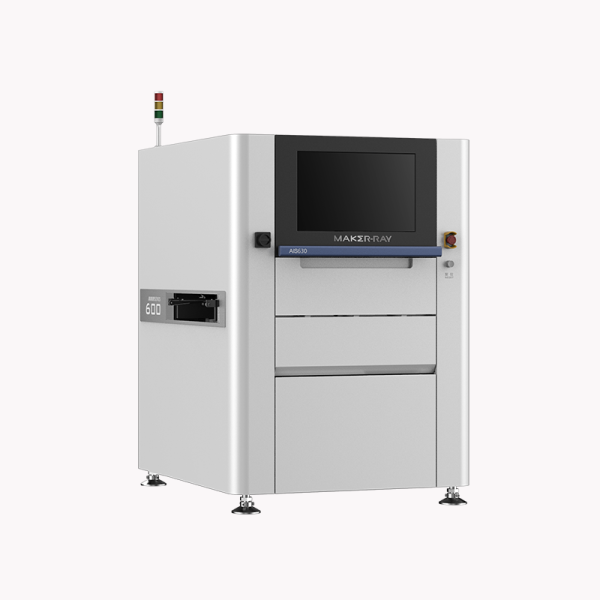Production of inspection machine electronics is a fast-paced business, and quality control is essential. The solder paste quality used in PCB assembly has a direct impact on the performance and dependability of the product. Solder bridging, weak connections, and open circuits can be brought on by subpar solder paste, which can result in unsuccessful goods and dissatisfied consumers. Implementing effective quality control processes, like Maker-ray‘s 3D solder paste inspection, is essential to preventing errors and ensuring peak performance.
Impacts of Poor Solder Paste Quality on Product Reliability
Solder paste acts as the bonding material in PCB assembly, ensuring secure connections between electronic components and the board. If the solder paste quality is compromised, it can lead to weak joints or incomplete soldering, causing intermittent electrical connections or outright failures. These issues can result in costly repairs, product recalls, and damage to brand reputation. Maker-ray’s 3D solder paste inspection technology provides a robust solution to mitigate these risks.
Role of Quality Control in Preventing Defects and Ensuring Performance
Quality control measures play a vital role in preventing defects and ensuring optimal performance in electronics manufacturing. Traditional solder paste inspection methods, such as 2D inspection, have limitations in accurately assessing the quality of solder paste deposits. Maker-ray’s 3D solder paste inspection technology revolutionizes the process by providing a comprehensive analysis of the solder paste volume, height, and shape. This enables manufacturers to detect defects early on, make necessary adjustments, and achieve consistent and reliable solder joints.
Challenges in Traditional Solder Paste Inspection Methods
Traditional solder paste inspection methods face several challenges in accurately assessing paste deposits. 2D inspection techniques may not capture the full profile of the solder paste, making it difficult to identify subtle defects. Moreover, manual inspections are time-consuming and prone to human error. Maker-ray’s 3D solder paste inspection overcomes these challenges by utilizing advanced imaging technology and algorithms to create a detailed three-dimensional representation of the solder paste, ensuring accurate and reliable inspection results.
Introducing Maker-ray: Pioneer in 3D Solder Paste Inspection
As a pioneer in quality control solutions, Maker-ray offers cutting-edge advancements in 3D solder paste inspection technology. With extensive expertise in the electronics manufacturing industry, Maker-ray understands the challenges faced by manufacturers and has developed innovative solutions to address us. Our 3D solder paste inspection technology sets new standards in accuracy and efficiency, empowering manufacturers to enhance quality control processes.
Advantages of Maker-ray’s 3D Solder Paste Inspection
Maker-ray’s 3D solder paste inspection offers several advantages over traditional methods. Firstly, it provides accurate and reliable inspection of solder paste deposits, ensuring optimal soldering quality and reducing the risk of defects. Secondly, real-time feedback and process optimization capabilities enable manufacturers to make immediate adjustments, minimizing rework and improving overall production efficiency. Lastly, Maker-ray’s solution seamlessly integrates with production lines, allowing for streamlined operations and increased throughput.
Conclusion
In conclusion, quality control is vital in inspection machine electronics manufacturing, and Maker-ray’s 3D solder paste inspection technology plays a pivotal role in enhancing quality control processes. By accurately assessing the solder paste deposits, manufacturers can prevent defects, ensure optimal performance, and safeguard our brand reputation. Maker-ray’s expertise and cutting-edge technology empower manufacturers to achieve consistent and reliable solder joints, leading to improved product quality and customer satisfaction.




